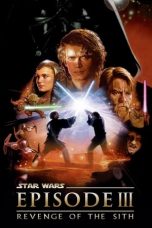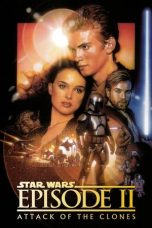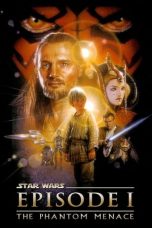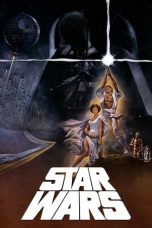- Source: Star Guitar
- Source: Star (guitar)
"Star Guitar" is a song by English electronic music duo the Chemical Brothers, released as the second single from their fourth album, Come with Us (2002). It reached number eight on the UK Singles Chart, number two on the US Billboard Dance Club Play chart, and number one on the UK Dance Chart. The song was greeted with praise from critics.
Structure
"Star Guitar" is 127 beats per minute and in the key of F major. It contains a four measure-long acoustic guitar sample from the beginning of the David Bowie song, "Starman", hence the name, "Star Guitar". This sample is repeated throughout the majority of the track, with various musical elements playing over it as a main theme. The song also contains an electronic sample of "Fly to Venus" by Electronic System.
Music video
The music video, directed by Michel Gondry, features a continuous shot filmed from the window of a speeding train passing through towns and the countryside. However, the buildings and objects passing by appear exactly in time with the various musical elements of the song, including the beats. The video is based on DV footage Gondry shot while on vacation in France; the train ride between Nîmes and Valence was shot ten different times during the day to get different light gradients. The Pont du Robinet as well as Pierrelatte's station can be seen and the cities of Miramas and Avignon. Gondry had experimented with a different version of the same effect in his video for Daft Punk's "Around the World", where he had represented each element of the music with a dancer.
Gondry plotted out the synchronization of the song on graph paper before creating the video, eventually "modelling" the scenery with oranges, forks, tapes, books, glasses and tennis shoes.
Reception
Upon the release of Come with Us, Nathan Rooney of Pitchfork, referring to its placement on the album, said the song was the "Chemical Brothers deviat[ing] from their role as Big Beat deities" and "it's slight, but not nearly as vapid as "Hoops," the song that follows it." Scott Plagenhoef, also of Pitchfork Media, originally said the track "doesn't leave much of an impression, but may as well be Beethoven's 9th next to the Richard Ashcroft collaboration "The Test". However, he later changed his opinion, saying it is "a fantastic track I grossly underrated here at the time" and that it was among the "best of the group's work [in the 2000s]".
After noting the album is "steeped in retro-synth glory", Sal Cinquemani of Slant Magazine said "Star Guitar" is "a crisp post-disco work-out featuring bristling guitars and a Giorgio Moroder-style synth-bass. Pat Blashall of Rolling Stone referred to the song as "slowly blooming", positively noting that within the track, "a dreamy melody hatches from an array of Ritalin beats, is evidence of a band that is increasingly drawn to disorientingly lush tunes rather than to mere adrenaline anthems."
In 2006, Slant Magazine ranked the song at number 23 in their list of the "100 Greatest Dance Songs", and, in 2010, ranked it at number 32 in their list of "The 250 Best Singles of the 2000s". In 2009, Pitchfork ranked the song at number 398 in their list of The Top 500 Tracks of the 2000s. Fatboy Slim revealed in 2012 that he had been asked to remix the song upon its release, but turned down the offer owing to his opinion that the song could not be improved.
Track listings
Credits and personnel
Credits are lifted from the Come with Us album booklet.
Studios
Recorded at Miloco Studios (South London, England)
Edited in the Miloco Studios basement
Mastered at The Exchange (London, England)
Personnel
Charts
Release history
See also
List of post-disco artists and songs
References
The star is a body shape of solid body electric guitar, particularly favoured for heavy metal music. It blends some features of the Gibson Flying V and Gibson Explorer, both of them much older designs.
Eddie Van Halen hacked his explorer-shaped Ibanez Destroyer to make it look like a shark around 1977, so he is credited as the inventor of the star-shaped guitar.
Wayne Charvel refined the design and those Charvel Stars 79-83 are among the most valued instruments of the brand. The earlier had strat headstocks, later on replaced with the Jackson pointy headstock.
Models
= Jackson
=The earliest known star bodies were built by Jackson Guitars, who produced both through-neck custom models and commercial versions with bolt-on necks.
More recently, Jackson have produced the Jackson Kelly Star KSXT/KS-2 with a similar body shape to the Star, combining the "front" half of a Jackson Kelly with the asymmetric pointed 'V' ends of the Jackson Randy Rhoads. This body shape was only in production for a short time in the early 2000s, with its market niche now being served by the Jackson Warrior, which is less distinctly "star"-shaped at first glance but has a similar general structure. Jackson now makes a "Gus G." signature star in 3 levels, the JS32 bolt on import, the X series neck thru import, and a US made neck thru model.
= Other major makers
=A star body produced by Kramer Guitars was known as the Voyager. Kramer also produced another star body guitar model for the Japanese market only: The Kramer JK8000.
Charvel Guitars have also produced some model of star profile, for example the star model of the Charvel Desolation series.
The Dean ML is a similar design to the star, but differs in having symmetrical tail horns (or wings as they are known in Flying V and similar designs). The Washburn Guitars Dime (or Dimebag, after Dimebag Darrell who popularised the Dean design) uses the Dean ML profile.
ESP guitars have the RS series guitar, similar to the star but with a different headstock. It is made by their Edwards guitars subdivision and is only sold in Japan. ESP also produces Gus G and Roope Latvala signature models which have a star shape.
Ibanez built star-shaped models in the mid-1980s in its DT and DG series. As with most other "star" guitars, the body was a variant of the "Explorer" shape (called "Destroyer" by Ibanez) that had a roughly triangular section of its rear end cut out. Since 2008, Ibanez has produced the Xiphos, an x-shape guitar similar to the Jackson Warrior but with reversed cut edges. The first prototype was built for Muhammed Suiçmez of Necrophagist as a signature model; the Xiphos was reintroduced in 2021 as a part of the revival of the Iron Label series.
= Custom designs
=The original Jackson star shape remains popular with home constructors and commercial custom-builders.
= Rosa Hurricane
=The guitar at left in the image at right is a Rosa Hurricane of star design, date and country of manufacture unknown. Two high-output humbuckers, conventional three-position pickup change switch, single passive volume and tone controls. This is because the guitar was built to be played loud to extremely loud and dirty, with most of the tone shaping being done by guitar effects or the guitar amplifier itself.
Scale length is just over 25½" (the longest common scale length for electric guitars) but the body of this example was routed for about 26½", a serious defect which rendered the guitar untunable. Originally equipped with a Stratocaster style tremolo arm, this particular instrument has been converted to hard-tail ("blocked"), which has solved the tuning problem and also improved tuning stability and provided even more sustain.
Rosa was a house brand of Australian importer Rose Music. This model was intended as an entry level electric guitar.
Similar body shapes
The name star has been given to several other guitar shapes unrelated to the Jackson body shape.
One example was the guitars played by Gerry Shephard from 1972 in The Glitter Band, the backing band of Gary Glitter. These had bodies in the shape of a regular five-pointed star, in keeping with the glam rock genre of the band. The first, gold in colour, was made by Chris Eccleshall. It was destroyed in a baggage handling accident; the second, silver in colour, was built by John Birch to replace the first.
Steve Carr built a star guitar for Paul Stanley of Kiss around 1980, basically looking like the Glitter Band's body turned 180 degrees, featuring a sparkly body. It can be seen in the German "Talk To Me/She's So European" TV-performance.
A copy of the John Birch star guitar, also silver in colour and produced by First Act, has more recently been played by Martin Gore, touring with Depeche Mode.
BC Rich have their own 'star' shapes. The Ironbird is a much more pointy version of the Star; it holds similar features to a Dean Razorback. The Stealth is another.
ESP Guitars have several star guitars, the Roope Latvala and Gus G signature models in North America, and the Akira Takasaki Random Star, Syu Crying Star, Anchang signature, and George Lynch Kamikaze Star in Japan.
See also
= Other radical guitar profiles
=Gibson Explorer.
Gibson Flying V.
Dean ML.
Jackson Randy Rhoads.
Jackson Kelly.
Jackson King V.
Burns Flyte.
BC Rich Ironbird.
ESP Gus G Signature Guitar.
ESP Roope Latvala Signature Guitar.
Kramer Voyager.
Charvel Star.
References
External links
Rob Cavestany's Custom Shop Jackson Star Body, a Jackson through-neck, with photos.
Gerry Shepherd's Star Guitar.
Martin Gore's First Act Star guitar.
Kata Kunci Pencarian:
- Star Five
- Riize
- Daoko
- Daniel Padilla
- Michel Gondry
- Tuonela
- Koes Bersaudara
- Kobe Bryant
- Diamond Star Halos
- PlayStation 2
- Star Guitar
- Star (guitar)
- PopStar Guitar
- Guitar Star
- Star Guitar (horse)
- SingStar Guitar
- Trigger (guitar)
- Guitar Hero
- Star (disambiguation)
- Semi-acoustic guitar
Star Wars: Episode III – Revenge of the Sith (2005)
Star Wars: Episode II – Attack of the Clones (2002)
Star Wars: Episode I – The Phantom Menace (1999)
Star Wars: The Last Jedi (2017)
Star Wars: The Force Awakens (2015)
Star Wars (1977)
Star Wars: The Rise of Skywalker (2019)
No More Posts Available.
No more pages to load.














